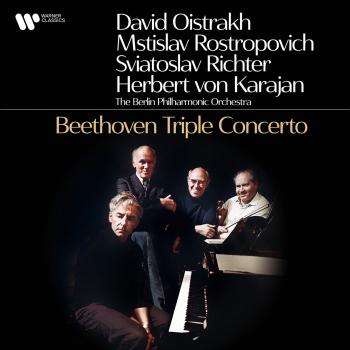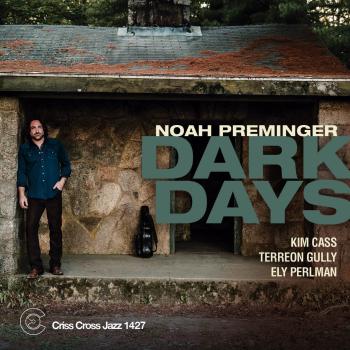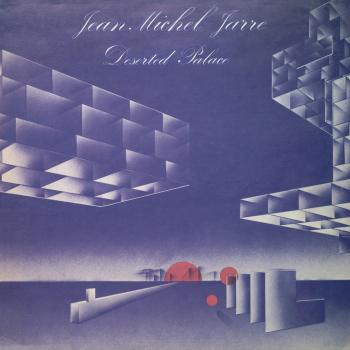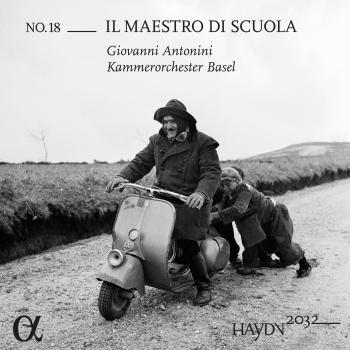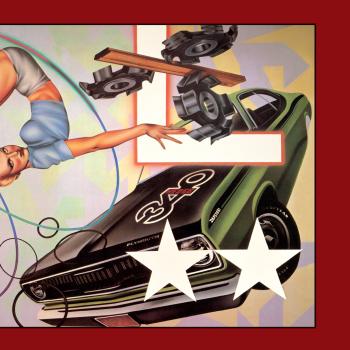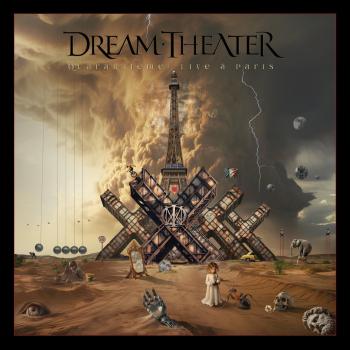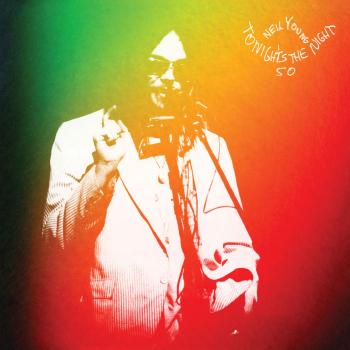
Biber: Rosenkrantz Sonaten (Mystery Sonatas) Sirkka-Liisa Kaakinen & Battalia Ensemble
Album info
Album-Release:
2014
HRA-Release:
03.03.2014
Label: Ondine
Genre: Classical
Subgenre: Chamber Music
Artist: Sirkka-Liisa Kaakinen & Battalia Ensemble
Composer: Heinrich Ignaz Franz von Biber (1644–1704)
Album including Album cover Booklet (PDF)
- 1 I. Praeludium, Jesus, den du, o Jungfrau, vom Heiligen Geist empfangen hast 02:29
- 2 II. Variatio. - Aria allegro - Variations - III. Finale 03:28
- 3 I. Sonata II A-Dur, Jesus, den du, o Jungfrau, zu Elisabeth getragen hast 01:34
- 4 II. Allaman - III. Presto 03:22
- 5 I. Sonata. - Presto. - Adagio. 01:43
- 6 II. Courante - Double 02:54
- 7 III. Adagio 01:57
- 8 I. Ciacona 07:55
- 9 I. Praeludium 00:53
- 10 II. Allaman 01:36
- 11 III. Gigue 01:11
- 12 IV. Saraban - Double 04:00
- 13 I. Lamento 03:24
- 14 II. Presto 02:42
- 15 III. Adagio 01:57
- 16 I. Allamanda 03:55
- 17 II. Sarab - Variatio 05:20
- 18 I. Sonata. - Adagio - Presto 01:59
- 19 II. Gigue and Double - Presto, Double 2 03:42
- 20 I. Sonata 02:36
- 21 II. Courante - Double 03:08
- 22 III. Finale 01:13
- 23 I. Praeludium. 00:59
- 24 II. Aria - Variations 07:30
- 25 I. Sonata 02:16
- 26 II. Surrexit Christus Hodie 03:31
- 27 III. Adagio 01:27
- 28 I. Intrada 00:47
- 29 II. Aria Tubicinum 01:25
- 30 III. Allemande 02:26
- 31 IV. Courante - Double 02:57
- 32 I. Sonata 02:42
- 33 II. Gavotte 01:08
- 34 III. Gigue 01:33
- 35 IV. Sarabande 01:38
- 36 I. ----- 02:18
- 37 II. Aria - Gigue 06:26
- 38 I. Sonata 01:54
- 39 II. Aria 05:38
- 40 III. Canzon 02:47
- 41 IV. Sarabanda 03:09
- 42 Mystery Rosary Passacaglia in G Minor 09:28
Info for Biber: Rosenkrantz Sonaten (Mystery Sonatas)
Biber’s Mystery Sonatas are a set of 16 virtuosic violin sonatas which serve as a unique masterpiece of the Baroque repertoire. Each sonata features one of the fifteen rosary mysteries that surround the life of Jesus and the Virgin Mary.
Biber uses many extended techniques for the instrument, most prominently the requirement of various re-tunings of the instrument in order to pull of special effects and techniques.
Kaakinen-Pilch is a great leader and exponent of early music and pulls of these difficult pieces with style and aplomb.
Sirkka-Liisa Kaakinen, violin
Battalia Ensemble:
Susanne Helasvuo, piano
Eero Palviainen, lutes, guitar, organ
Annamari Pölhö, keyboards
Mika Suihkonen, violone
Battalia Ensemble
Helsinki-based Battalia was formed in 1989, though its members have been playing together ever since their early student days. Its nucleus consists of two violins, gamba, teorbo and harpsichord but the line-up varies according to the work to be performed.
Battalia has appeared extensively throughout Finland, and in England, Germany, Estonia, the Netherlands, Denmark, Egypt and Poland. It has also collaborated with Finnish Baroque vocalists and instrumentalists and such artists as Sarah Cunnignham, David Cordier, Andrew Lawrence-King, Paul O'Dette and the Kuijken brothers.
Many Baroque orchestras and ensembles both in Finland and abroad have recruited members of Battalia for their ranks. Even a complete change of style is elegantly conducted: the Baroque wig is soon banished to a cupboard at the call of new music, blues, or even a pub gig. The Battalia sound can be heard on a number of records.
Sirkka-Liisa Kaakinen
is an unusually versatile violinist. Though she plays music of every era, the emphasis in her repertoire is on the 17th to 19th centuries. She also plays the viola and viola d’amore and often leads the orchestra or conducts from the front desk.
When she was nine, her school in Kajaani bought 20 violins and set the whole of the music class playing. By the end of the autumn all but five pupils had given up, and after Christmas the only remaining one was Sirkka-Liisa, who soon began taking lessons with Olli Kuusoja. A giant of a man who ran a florist’s shop and kept sheep, he tenderly herded his pupil towards the Junior Sibelius Academy.
By the time she left school, Sirkka-Liisa had moved to Helsinki and from then onwards became an inveterate chamber musician thanks to Battalia, Avanti!, the Sixth Floor Orchestra, Yoshiko Arai, Paavo Pohjola, Anssi Mattila and various festivals.
Though Sirkka-Liisa has had many memorable teachers, her primary taskmaster has always been work. While studying in the Netherlands, she gained access to the highest early music elite in the orchestras of Frans Brüggen, Philippe Herreweghe and others. Her longest spell, lasting over ten years, was as leader of the Collegium Vocale. She never stops learning, because every concert, and especially the worst and most difficult, teaches the experienced musician something.
Sirkka-Liisa is nowadays in great demand as a leader of countless renowned early music ensembles and orchestras, performing music of the Baroque and symphonies of the age of Mozart and Schubert. Her solo repertoire includes such works as the 16 Mystery Sonatas by Biber, the Bach Solo Sonatas and Partitas, and solo violin works of the 16th and 17th centuries.
Professor of chamber music at Stavanger University, Sirkka-Liisa has also been a Professor at the Royal Danish Academy of Music and the Bremen Institute of Arts and teaches at the Sibelius Academy. She lives with her Polish husband and son Wilhelm in Cracow but they have a second home by a lake in Northern Finland. And that, she says, is where her heart lives.
Susanne Helasvuo
The 1980s were, for many young Finnish musicians, good years in which to train. This also applied to Susanne Helasvuo, for whom both modern music and the new approach to early music were to be a massive, mind-stretching experience.
Born into a family of musicians, Susanne began playing the piano when she was five and the violin at seven. Two of her many teachers stand out above all the others: Ari Angervo, who taught her the violin for many years and gave her a firm grounding in music, and Professor Chaim Taub, who helped her in her formative years by offering both systematic tuition in technique and fantastic food for musical expression.
Susanne feels she was very privileged to join Avanti! at an early age. She learnt a lot about playing in an orchestra and for the first time in her life was fed a substantial diet of contemporary music. The Tapiola Sinfonietta, in which she has played the violin since 1994, is in many ways a continuation of the Avanti! musical philosophy.
A year spent in the orchestra of the Finnish National Opera instilled in Susanne a life-long love of opera. Summer after summer she thus finds herself in the Savonlinna Opera Festival Orchestra. Luckily her family look forward to the annual departure for Eastern Finland as eagerly as she does.
It was during Bach Week 1985 at the Ritarihuone in Helsinki that Susanne began her close liaison with Baroque music, as a member of the Helsinki Chamber Strings. The whole of the academic year went preparing for what turned out to be a sensationally successful event that sparked off a tremendous interest in early music among performers and audiences alike. Susanne studied the Baroque violin with Monica Huggett and in the ranks of Battalia from 1989 onwards.
Over the years Susanne has encountered numerous fine musical characters; this, she says, has been one of the greatest riches in her life. She has three children and is married to cellist Janne Aalto, who also plays in the Tapiola Sinfonietta.
Eero Palviainen
was born in Tampere, started school in Gothenburg and spent his teens in Southwest Finland before surfacing as a music student in Helsinki. He can turn his hand to all sorts of instruments, or at least the Renaissance lute, vihuela, archlute, theorbo, Baroque guitar and Baroque lute. And he has given solo performances on all of these in various parts of Europe and Japan. He is in particularly great demand as a continuo player, because beneath his mild exterior lies a fiery, fearless comp player and a guy who gives the music fine shades of colour and gets along with all and sundry.
Asked to name his most influential teachers, Eero places Leif Karlson and Hopkinson Smith at the top of the list. He is kept busy by all kinds of early music ensembles: L’Arpeggiata and the Ensemble Akademia in France, Arte Suonatore in Poland, the Freiburg Baroque Orchestra in Germany and Battalia, the Sixth Floor Orchestra, the Helsinki Baroque Orchestra, the Ostrobothnian Chamber Orchestra, Baccano and the Sama Baroque ensemble in Finland.
Eero frequently joins forces with cellist Hidemi Suzuki, and in addition to touring they have released a disc of Vivaldi’s cello sonatas. Of Eero’s various exploits, one worth special mention is his appearance at the Tavastia Club in Helsinki in a concert devoted to the music of Jimi Hendrix.
Eero has himself made all of his three archlutes and 12 other instruments, from a vihuela to a Romantic guitar. He’s a modest sort of fellow who doesn’t claim winter sports as his hobby when really all he does is get out on skis occasionally; nor can he say whether doing up his 1940s house in Helsinki is an unavoidable necessity or a hobby. Work leaves him so little time for sailing that he reckons he’ll soon have to sell his boat, though he’s been saying that for ages.
Annamari Pölhö
Her teacher (Kari Rydman) at high-school first instilled a passion for music in Annamari Pölhö with Mozart. She played the piano, but fell for the sound of a harpsichord at an early age on hearing Bach’s D Minor Concerto. Realising that the lonely life of a pianist could be replaced by group music-making as a harpsichordist, she swapped instruments without a moment’s hesitation.
Annamari has warm memories of her student years in Finland and Holland, because they were filled with a burning desire to make and listen to music in many ways. She had most fun at the Sibelius Academy being taught the alto saxophone by Jari Perkiömäki. In addition to her solo studies she specialised in the continuo playing that in time earned her a doctorate. Hence she is nowadays known primarily for her early chamber music thanks to her rich, animated and versatile skills at accompanying.
The world is full of Annamari’s favourite music, from Monteverdi to Mahler and from Abba to Janis Joplin. She also did dancing of various kinds for as long as her back held out and is so in love with snow that she has even considered going to live in Lapland now that Helsinki gets so little snow in winter.
Most important of all in Annamari’s life are her sons Pan and Teo, and motherhood did indeed lend a certain roundness to her somewhat harpsichord-shaped life. Mother and sons have had tremendous fun together, and if the need to juggle with teaching, concerts, practice and single parenthood has sometimes proved tricky to say the least, then humour, she believes, is the universal answer. She also has faith in her wise granny’s motto: “A little a day is a lot in a week.”
Annamari gave her debut concert in 1991 and has appeared in a variety of ensembles, especially in a duo with flautist Petra Aminoff, as the Battalia keyboard player, in the Sixth Floor Orchestra and the Harp Consort. She has played for 16 discs, many of them award-winners.
An experienced teacher, Annamari is nowadays employed by the Helsinki Metropolia University of Applied Sciences.
Mika Suihkonen
The love of classical music sparked off by his cello teacher Csaba Szilvay in the 1970s was the decisive reason why Mika Suihkonen became a musician and not a basketball player. Meanwhile the social ambience of the Helsinki Junior Strings, the Helsinki Chamber Strings and the Sibelius High-school was moulding his musician persona in many ways. The early music ensemble – Battalia – formed by him and some of his high-school friends is still his number one musical forum and its members major factors in his development as a player. He has had many teachers in addition to Szilvay; heading the list are Sarah Cunningham, Andrew Lawrence-King and Wieland Kuijken.
Music has not, however, totally ousted basketball from Mika’s life. He is a keen follower of the NBA league, where his favourite teams are the Boston Celtics and the Portland Trail Blazers. He himself plays in the Admirals’ over-35s team.
Mika has a son and daughter and likes cooking. He tends to go for good home cooking and his specialities are oxtails and sausages. He likes his sofa, reads a lot and collects whodunits –his bookshelf sports all the Maigret books that have been translated into Finnish.
J.S. Bach, Monteverdi, Purcell, Charpentier, Buxtehude, Schütz, Tunder and Bruhns are among his favourite composers, and from later eras Brahms, Richard Strauss, Bartók and Shostakovich. He thinks Finnish jazz musicians are great, hates opera and loves rockabilly and doo-wop, but if forced to choose his music for a desert island, he would plump for Bach cantatas.
Mika is the possessor of four instruments and three bows: a viola da gamba (Guy Derat 1990), a Baroque cello (Ilkka Vainio 1996), a violone (Bastian Muthesius 1991) and a tenor viol (Wang 2008). The bows were made by Luis Emilio Rodriguez. Mika gave his debut concert in 1999 and his first disc is scheduled for release in 2009.
Booklet for Biber: Rosenkrantz Sonaten (Mystery Sonatas)


